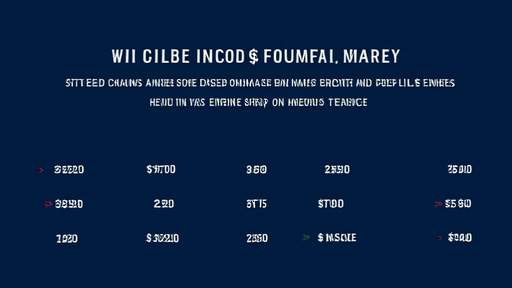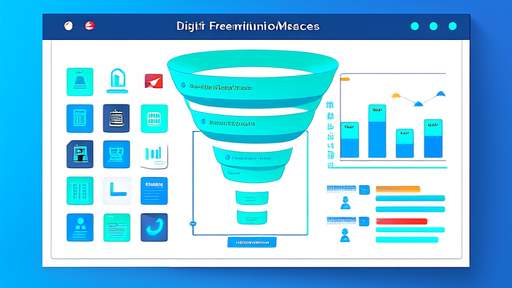The gray market has long been a thorn in the side of manufacturers and authorized distributors, creating pricing chaos and eroding brand value. Unlike the black market, which deals in counterfeit or illegal goods, the gray market operates in a legal but unauthorized space where genuine products are sold through unintended channels. The price disparities between these parallel markets and official distribution networks often lead to significant challenges for businesses trying to maintain control over their pricing strategies.
One of the most pressing issues in gray market management is the substantial price gap that emerges between authorized and unauthorized sellers. When products leak into the gray market, they frequently sell at discounts ranging from 15% to 40% below manufacturer suggested retail prices (MSRP). This creates immediate tension with official channel partners who have invested in marketing, inventory, and customer service only to see their customers lured away by cheaper alternatives. The problem becomes particularly acute in industries with high-value goods like electronics, pharmaceuticals, and luxury items where even small percentage differences represent substantial absolute amounts.
The root causes of gray market price differentials often trace back to regional pricing strategies and currency fluctuations. Manufacturers frequently set different prices across markets based on local purchasing power, taxes, and distribution costs. When exchange rates shift dramatically or when one market experiences economic downturns, the price differences between regions can grow large enough to make cross-border arbitrage profitable. This explains why you might find European luxury watches selling for 30% less in Asia or why pharmaceutical products move from low-price regulation markets to higher-price ones.
Currency volatility has become an especially powerful driver of gray market activity in recent years. During periods of rapid currency depreciation in emerging markets, local distributors often find their inventory suddenly worth far more when sold abroad than domestically. The temptation to divert products becomes overwhelming when the potential profit margin exceeds what could be earned through legitimate channels. This phenomenon has forced multinational corporations to reconsider their entire approach to emerging market pricing strategies.
Controlling gray market price gaps requires a multi-layered approach that combines technology, channel management, and strategic pricing. Advanced serialization and tracking systems now allow manufacturers to monitor products throughout the supply chain, making it easier to identify leaks. Some companies have implemented blockchain-based solutions that create immutable records of each product's journey from factory to end customer. When gray market goods appear, these systems help trace them back to the specific distributor or region where the diversion occurred.
Pricing strategy adjustments represent another critical tool in managing gray market threats. Rather than maintaining rigid regional price differences, progressive companies are adopting more dynamic pricing models that adjust to currency fluctuations and local market conditions in near real-time. This reduces the arbitrage opportunities that gray marketers exploit. Some manufacturers have also moved toward global price harmonization for certain product lines, accepting slightly lower margins in some markets to eliminate the economic incentives for parallel imports.
The legal landscape surrounding gray market enforcement continues to evolve as courts in different jurisdictions interpret trademark and exhaustion doctrines differently. In the United States, the Supreme Court's 2013 Kirtsaeng decision established that the first sale doctrine applies to goods manufactured abroad, significantly limiting manufacturers' ability to block parallel imports through legal means. This has forced companies to rely more heavily on contractual agreements with distributors and technological solutions rather than litigation to combat gray market diversion.
Channel relationships require constant nurturing in the fight against gray market threats. Manufacturers that maintain transparent communications with their authorized distributors and provide adequate profit margins create less incentive for channel partners to divert products. Some companies have implemented partner profitability programs that reward distributors for maintaining price discipline and reporting gray market activity. These programs often include market development funds that help official channel partners compete more effectively against unauthorized sellers.
The rise of e-commerce platforms has dramatically amplified gray market challenges by making price comparisons instantaneous and giving unauthorized sellers global reach. A manufacturer might carefully manage brick-and-mortar distribution only to find their products being sold at deep discounts on Amazon or eBay by sellers who obtained them through gray market channels. Combating this requires specialized brand protection teams that continuously monitor online marketplaces and issue takedown notices when unauthorized sellers appear. Some companies have developed sophisticated algorithms that crawl e-commerce sites to identify suspiciously low-priced offers of their products.
Consumer education plays an often overlooked but vital role in gray market price control. Many buyers gravitate toward gray market offers without understanding the potential downsides, which can include lack of warranty coverage, incompatible regional specifications, or even safety issues with products not intended for their market. Manufacturers that effectively communicate these risks through marketing campaigns often find that a significant portion of customers will choose to pay slightly higher prices for the security and support of authorized channels.
Looking ahead, the battle against gray market price erosion will likely intensify as global supply chains become more complex and economic volatility persists. The most successful manufacturers will be those that combine technological tracking solutions with flexible pricing strategies, strong channel partnerships, and consumer-focused messaging. While the gray market can never be completely eliminated, its impact on pricing integrity can be substantially reduced through coordinated, intelligent management approaches that address both the symptoms and root causes of diversion.
The pharmaceutical industry provides particularly instructive case studies in gray market price control, where the stakes involve not just profits but patient safety. When life-saving medications flow from low-income countries with price controls to wealthier markets, the resulting shortages can have dire consequences. Some drug manufacturers have responded by reformulating products for specific markets or implementing strict volume monitoring at the pharmacy level. These measures demonstrate how far companies must sometimes go to maintain pricing integrity when human health is involved.
Ultimately, gray market price management isn't just about protecting margins—it's about preserving the value proposition for all stakeholders in the legitimate distribution chain. When authorized dealers can't compete with gray market prices, they reduce investments in customer service, product expertise, and local market development. Over time, this erosion of the value-added services that differentiate official channels can damage brand equity and customer satisfaction. The companies that recognize gray market control as a strategic imperative rather than just a tactical challenge will be best positioned to thrive in an increasingly complex global marketplace.

By /Jun 3, 2025

By /Jun 3, 2025

By /Jun 3, 2025

By /Jun 3, 2025

By /Jun 3, 2025

By /Jun 3, 2025

By /Jun 3, 2025

By /Jun 3, 2025

By /Jun 3, 2025

By /Jun 3, 2025

By /Jun 3, 2025

By /Jun 3, 2025

By /Jun 3, 2025

By /Jun 3, 2025

By /Jun 3, 2025

By /Jun 3, 2025

By /Jun 3, 2025

By /Jun 3, 2025

By /Jun 3, 2025

By /Jun 3, 2025